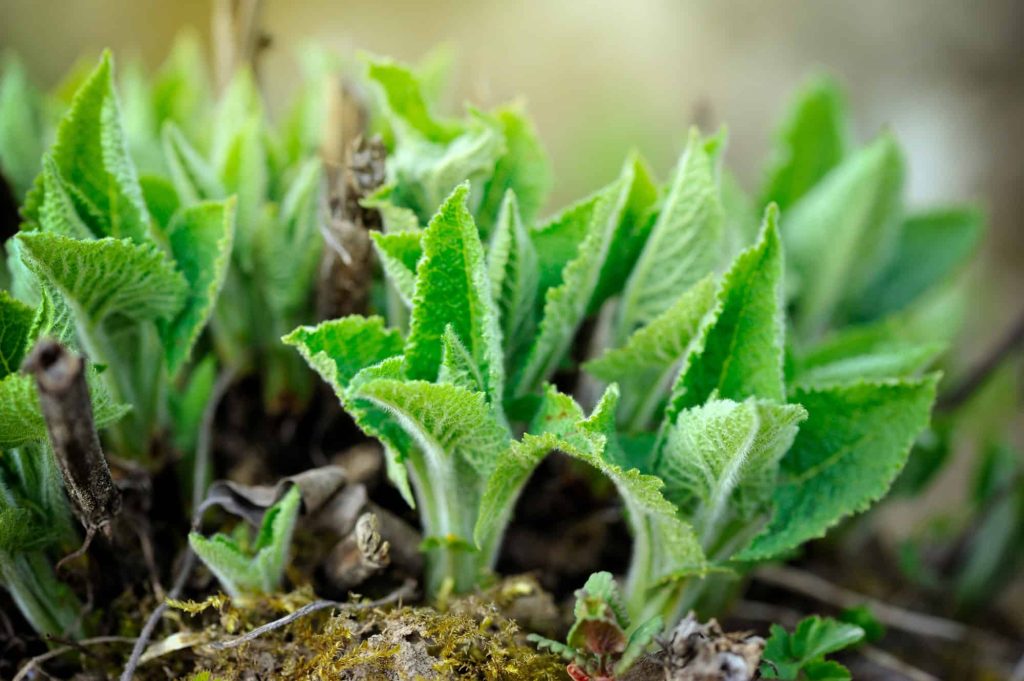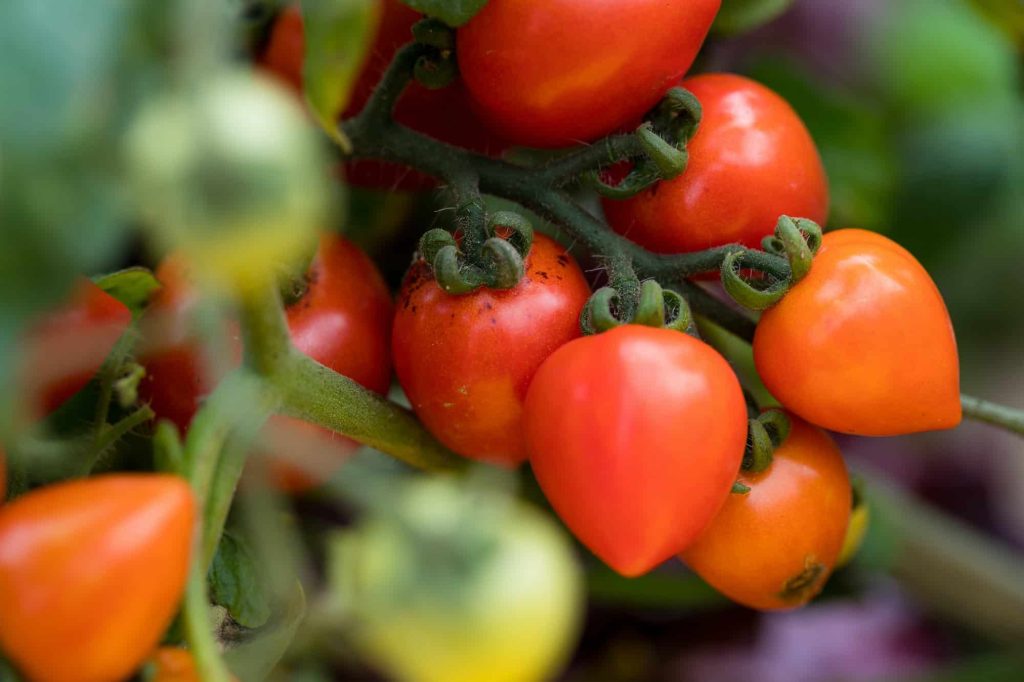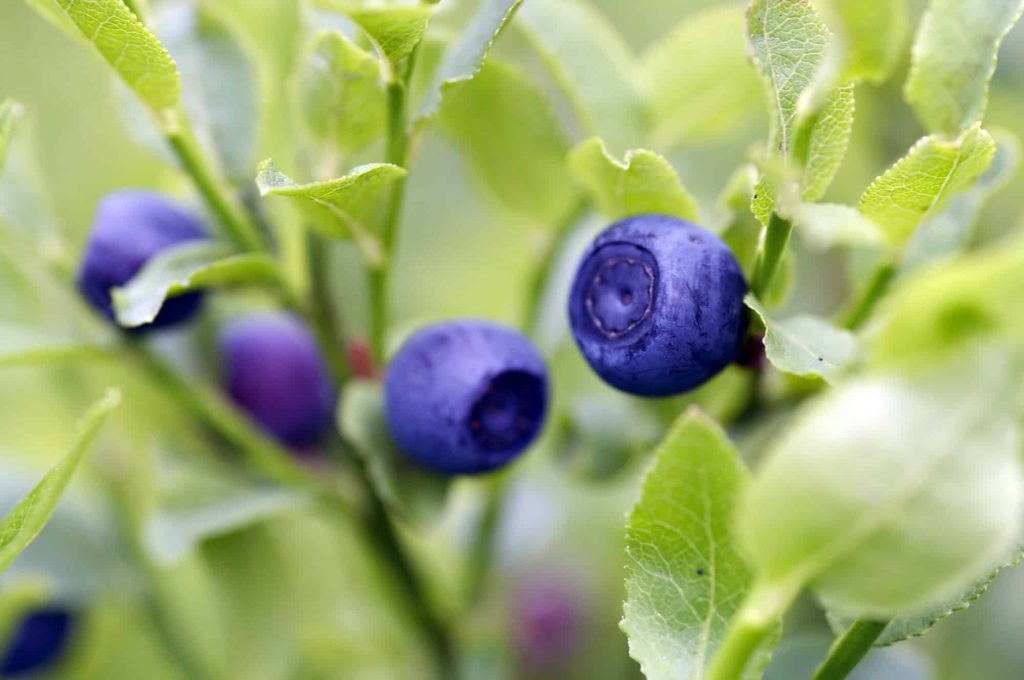Growing blueberries tend to require a lot of patience but with the right companion plant, this is sure to be more accessible.
Blueberries are to be planted in spring or late fall and it happens to be one of the most widely cultivated perennial fruit. It also grows really slow, it can take up to 2 or 3 years before you start getting large harvests but it also happens to be a plant worth having in your garden.
Blueberry plants are not just delicious but also extremely high in antioxidants which is one of the reasons they are regarded as superfoods. To get the best of blueberry plants, professionals recommend companion planting. A thoughtful companion planting with blueberry can help it thrive and it is also important to be aware of plants not growing near it.
Some of the best companion plants to grow with blueberry are strawberry, thyme, sage, basil, sweet fern, mountain laurel, azaleas, rhododendron, and lilacs. Blueberries are easy plants that can be highly beneficial to many herbs and flowers. It is not a good idea to plant blueberries near plants such as tomatoes, eggplants, cabbage, and beets.
The basic approach to getting the right companion plants for blueberries is to choose cover crops and ensure to experiment with these plants.
Companion planting is a time-tested gardening method that can be of great benefit to blueberry shrubs. You don’t need to leave your blueberry shrub alone in the garden when they are companion plants that can aid its growth and keep in mind that they are also plants you should not grow blueberries.
What Is Companion Planting?
Companion planting is a gardening strategy that involves planting certain crops that are of mutual benefit near each other. This gardening method has been adopted by gardeners and farmers for years to maximize yield in their gardens.
Companion planting can help enhance the soil and help you choose plants that act as deterrents to pests that can be of harm to their neighbors.
Planting crops that are of mutual benefit to each other can make other crops grown nearby thrive as well. Companion planting with taller plants can also provide shade for sun-sensitive plants with shallow roots.
Companion plants can help grow your plants faster, save them from pests and provide the necessary support for your crops. There are lots of reasons certain plants are likely to do better with other crops planted nearby. Some companion plants can also add nutrients like nitrogen back into the soil.
Best Blueberry Companion Plants
Blueberry shrubs will grow happily with the right companion. If you want to make things easy for your blueberries then you need to have them planted with crops they can benefit from. However, blueberries are naturally resistant to many of the usual pests in the garden which makes them great companions to many crops.
To increase the yield of your blueberry patch and enhance its growth, below are some of the best companion plants for them;
1. Strawberry
Strawberry is the first plant that comes to mind as a companion to your blueberries. Strawberries and blueberries thrive in similar soil requirements and both happen to be easy to grow garden fruit. Both can be used as beautiful landscape plants and you can reap from their fruits for many years. Blueberries and strawberries are ideal companions that can be grown in a container or raised beds.
2. Thyme
Thyme and blueberries will do great planted near each other. Thyme acts as living mulch or ground cover and it controls weeds in your garden as well. Blueberries are sure o benefit from having thyme planted nearby. This herb also regulates temperature and moisture. Blueberries attract butterflies and berry-eating mammals, and thyme can help keep the harmful pests away.
3. Sage

Sage is another great herb that will that can be of mutual benefit to blueberries. This herb prefers alkaline soil and it will tolerate acidic soils just like blueberries. Avoid planting cucumber near the two though as sage can stunt the growth of cucumber. Sage is also known to look pretty and thrive best when planted near blueberries.
4. Rhododendron
The beautiful blooms of Rhodes will not only make your garden look attractive but they can thrive in similar conditions as blueberries. However, unlike blueberries, Rhodes needs shades to grow hence they can be planted alongside highbush blueberries. The foliage of rhododendron can also provide the sensitive roots of your blueberries with shade in return.
5. Lewisias
Lewisias are a low-grower plant that can be grown alongside blueberries. It grows no more than 2 o 5 inches depending on the type you have planted and its flower color also depends on the variety. Plant Lewisia in groups in front of blueberries to make your garden look colorful and get the best look out of them
6. Lilacs
Lilacs are great flowers to plant near your blueberries. This flower attracts pollinators and provides shade for blueberries. It will tolerate acidic conditions just like blueberries and shrubs tend to bloom around the same time as blueberries.
7. Sweet Fern
Sweet fern is also known as Compotonia Peregrine. Sweet fern is a low-growing plant that loves the sun and acidic soil which makes it an ideal companion for blueberries. This plant attracts butterflies to your garden and it is also a nitrogen-producing plant that can be of great benefit to your blueberries.
8. Azaleas
Another attractive flower that will provide shade for your blueberries is azaleas. This plant blossoms particularly in hot summer and do best in the same acidic soil and environment as blueberries.
9. Basil

Some herbs are great companions to blueberries and basil happens to be one of those herbs. It can thrive in similar acidic conditions like blueberries but nothing too extreme. Basil features violet blossoms that can compliment a blueberry bush. Having basil planted in your garden provides flavoring for hundreds of recipes.
10. Heaths
Heaths are plants that are also known as bell heather and it is a common low grower plant in Western Europe and Great Britain. It blooms best at the end of winter and the start of spring hence it will be fine planted alongside blueberries. It grows to a short height of 2 feet hence it can be planted in front of a blueberry bush.
11. Grasses
Intercropping blueberries with some species of grasses can improve your fruit yield and plant growth. To pave way for successful blueberry cultivation, grow cover crops like grasses on the planting site before planting your blueberry. This process also fertilizes the soil.
12. Mountain Laurel
Another plant you shouldn’t overlook as a companion for your blueberry is the mountain laurel. This plant is often used for border edge and landscaping accents but it can help attract butterflies to your garden which are great pollinators. You might know this flower as Calico Bush.
What Not To Grow Near Blueberries
What not to grow near blueberries is just as important as the best companion plants to grow near them. Blueberry bushes tend to thrive in acidic soil and environment which might not be ideal for some plants. Most garden plants will tolerate acidic soil but will not tolerate being planted near blueberries.
1. Tomatoes
When choosing companion plants for blueberries, you need to avoid tomatoes as the shallow roots can be easily damaged by cultivation. The shrubs of your blueberry bush are also likely to look stunted with tomatoes nearby.

2. Eggplants
Eggplants are quite similar to tomatoes hence they shouldn’t be planted with blueberries. You should avoid planting blueberries in soil that has previously grown eggplants either.
3. Cabbage
Cabbages have heavy nutrient requirements which means they will compete with your blueberry plant for nutrients. Cabbages also attract pests such as worms, cucumber beetles, cabbage moths, and carrot flies which can all feed on your berries.
4. Beets
Beets are also considered to be bad neighbors to blueberries. Beets should be avoided as companion plants to blueberries as they can easily stunt each other’s growth.
Companion Planting Guide For Blueberries
The basic companion plants for blueberries are cover crops however some plants don’t grow in the same pH condition but tend to thrive planted near blueberries. There are two types of blueberry shrubs and you will discover that this plant grows differently. Below are some main problems you might want to avoid when choosing companion plants for blueberries.
- Be careful not to shade your blueberry bushes. Blueberries thrive from many hours of direct sunlight so be sure not to plant crops that will grow taller than your blueberry bush.
- Companion plants should be planted at the same time you plant the berry bush.
- Do not plant any crop that has different nutrient requirements than your blackberry. Blueberries are sensitive to fertilizers hence they should not be planted near plants that require the heavy application of organic fertilizers or compost
- Plants that have different soil pH requirements from blueberries should not be used as companion plants either as they are unlikely to thrive or survive acidic conditions.
FAQs
Are used coffee grounds good for blueberry bushes?
Coffee grounds are considered a great source of nitrogen for blueberries and since they do not require much in the way of fertilizer, coffee grounds can be used to provide the nitrogen they need.
Do blueberry bushes need mates?
Blueberry bush tends to thrive more when it cross-pollinates with a different variety although it is a self-fertile plant. You should buy more than one variety of blueberries to mate and they need to be near each other to produce larger fruits.
How do I make my soil more acidic for blueberries?
To make blueberry soil more acidic, you need to amen each soil with compost each season. The process of well-decomposed compost each season is the best way to make your soil more acidic.
Can you plant blueberries with vegetables?
Vegetables such as radishes are annual vegetables that can be planted with blueberries. Certain vegetables can be planted with blueberries but ensure they are not prone o fundal diseases that can affect your blueberries.
How far apart should you plant berry bushes?
Berry bushes should be planted at least 2, 3, or 4 feet apart from each other.
Where is the best place to plant a blueberry bush?
Blueberries will tolerate partial shades but they are best planted in the sun for larger and sweet fruit. However, they should not be planted in harsh weather conditions and they are best in locations where irrigation is readily available.
What month is best to plant blueberries?
The best season to have blueberries planted is spring. It can also be planted in late fall in all but the coldest regions. December and January are the ideal months to have new blueberry plants in the ground.
Final Thoughts
Blueberries are very easy to grow but it does require lots of patience for them to produce fruits. Companion planting can help you establish different species of plants that can be of benefit to each other together and the right companion planting is sure to improve the blueberry harvest.
While a companion planting guide is important for blueberries, it is also important to ensure that their roots are properly plunged into acidic soil and choose companions that can thrive in similar conditions.
More from our companion planting archive:
- Pumpkin Companion Plants (What Not To Grow Near Pumpkins)
- Mint Companion Plants (What Not To Grow Near Mint)
- Cayenne Companion Plants (What Not To Grow Near Cayenne)
- Basil Companion Plants (What Not To Grow Near Basil)
- Potato Companion Plants (What Not To Grow Near Potatoes)
- Tomato Companion Plants (What Not To Grow Near Tomatoes)
- 13 Raspberry Companion Plants (What Not to Grow Near Raspberries)
- Strawberry Companion Plants (What Not To Grow Near Strawberries)
- 10 Parsley Companion Plants (What Not to Grow Near Parsley)
- Radish Companion Plants (What Not to Grow Near Radishes)
- Nasturtium Companion Plants (What Not To Grow Near Nasturtiums)
- Corn Companion Plants (What Not To Grow Near Corn)

